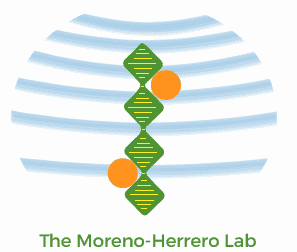
SMCs are highly conserved across all kingdoms of life and share a remarkable architecture. They are long polypeptide chains (>1000 amino acids), containing a hinge domain and bipartite ATP-binding head domains connected by 50 nm-long intra-molecular anti-parallel coiled coils. Bacterial SMC proteins dimerise via the hinge domain into a distinctive V-shaped structure that is re-modelled into a large ring by ATP binding or accessory subunits that bind across the head domains forming the so-called SMC complex. The loss of chromosome condensation in the absence of the SMC complex suggests that bacterial SMC is most similar to eukaryotic condensin, and it has been considered a prototype system for the study of SMC complexes in general. The Bacillus subtilis SMC complex comprises the SMC polypeptide, the kleisin family protein ScpA, and ScpB. All these components are required for chromosome compaction and faithful DNA segregation and mutations are lethal under conditions of fast growth.
Unravelling the mechanisms of DNA cohesion and condensation is a particularly challenging task because these processes are fundamentally mechanical in nature and thus particularly difficult to monitor using conventional biochemistry.
Our work and that of others determined that B. subtilis SMC and ScpB are dimers and ScpA a monomer. Furthermore, ScpB interacts with SMC indirectly via ScpA, and together these small subunits promote the formation of larger complexes including multimeric rings.
Topic-related papers of the group
M.E. Fuentes-Perez et al. Methods 60, 113-121 (2013). AFM volumetric methods for the characterization of proteins and nucleic acids. LINK
M.E. Fuentes-Perez et al. Biophysical Journal 102, 839-848 (2012). Using DNA as a fiducial marker to study SMC complex interactions with the Atomic Force Micrsocope. LINK
Collaborators
University of Bristol: Mark Dillingham Group
